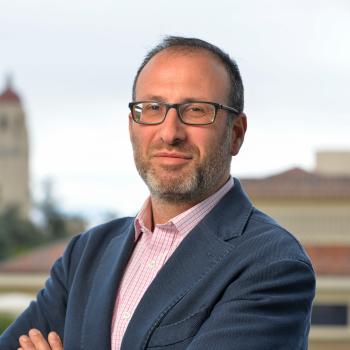Alberto Salleo
Perovskite & Organic devices
Stanford University, Department of Materials Science and Engineering, Stanford, USA
Email: asalleo@stanford.edu
Biography
(a) Professional Preparation
University of Rome La Sapienza Chemistry Laurea 1994
University of California, Berkeley Materials Science Ph.D. 2001
PARC, Inc. Electronic Materials Lab. Postdoc, 2004
(b) Appointments
2019- Chair, Materials Science and Engineering Department, Stanford University
2019- Professor of Materials Science, Stanford University, Stanford, CA
2013-2019 Associate Professor of Materials Science, Stanford University, Stanford, CA
2005-2012 Assistant Professor of Materials Science, Stanford University, Stanford, CA
2004-2005 Member of Research Staff, PARC Inc., Palo Alto, CA
(c) Honors and Awards:
Research and Scholarship Awards
• Fellow, Materials Research Society (2022)
• Fellow, European Academy of Sciences since 2021
• Cavaliere (Knighthood): Ordine al Merito della Repubblica Italiana (2020)
• Clarivate Highly Cited Researcher (top 1% cited scientist) in Materials Science since 2015
• Denice Denton Diversity Emerging Leader Workshop participant (by invitation only) (2016)
• SPIE Early Career Award (2010) • 3M Untenured Faculty Award (2007-2009)
• NSF Career Award (2007-2011)
• PARC Outstanding Performance Award (2003 and 2004)
• Fulbright Fellow (1995-2000)
University Awards
• Walter J. Gores Award for excellence in teaching (Stanford’s university-wide highest teaching honor, awarded to 3 faculty every year out of ~2,000)
• Tau Beta Pi School of Engineering Excellence in Undergraduate Teaching Award (2013)
Abstract for Presentation
Charge transport in semicrystalline polymers
Organic semiconductors are an interesting materials family for number of technologies including solar cells, LEDs, transistors and sensors. Carrier mobility in conjugated polymers continues to increase with recent reports of field-effect mobilities exceeding 10 cm2/V.s.. The fundamental premise of organic semiconductors is that synthetic chemists can generate materials with properties “on demand”. Unfortunately, even if this became a reality, we would not know what to order! Indeed, while organic semiconductors have been around for a while, the preeminent role of the microstructure in governing their properties is far from understood. In this talk, I will emphasize the role played by structure at different length-scales and how charge transport is a complex multi-scale phenomenon. We use charge-modulated IR spectroscopy to measure the delocalization of charges in crystallites. Correlating carrier mobility to charge delocalization highlights the importance of mesoscale film properties, such as the connectivity of aggregates by tie-chains. As a result, we study the mesoscale organization of polymers using new techniques in the transmission electron microscope and complementary X-ray diffraction measurements at the synchrotron. By combining these techniques we are able to study the microstructure across a range of length-scales in real space and reciprocal space. Microstructural analysis at these lengthscales coupled with charge transport theory allows to better understand the role of defects. Thus, such multiscale studies of microstructure are instrumental in guiding our understanding of charge transport and in general structure-property relationships in soft materials.
WELCOME TO CHINA TO ATTEND THE ICANS
23-26 August, Nanjing, China
Connect with us:



